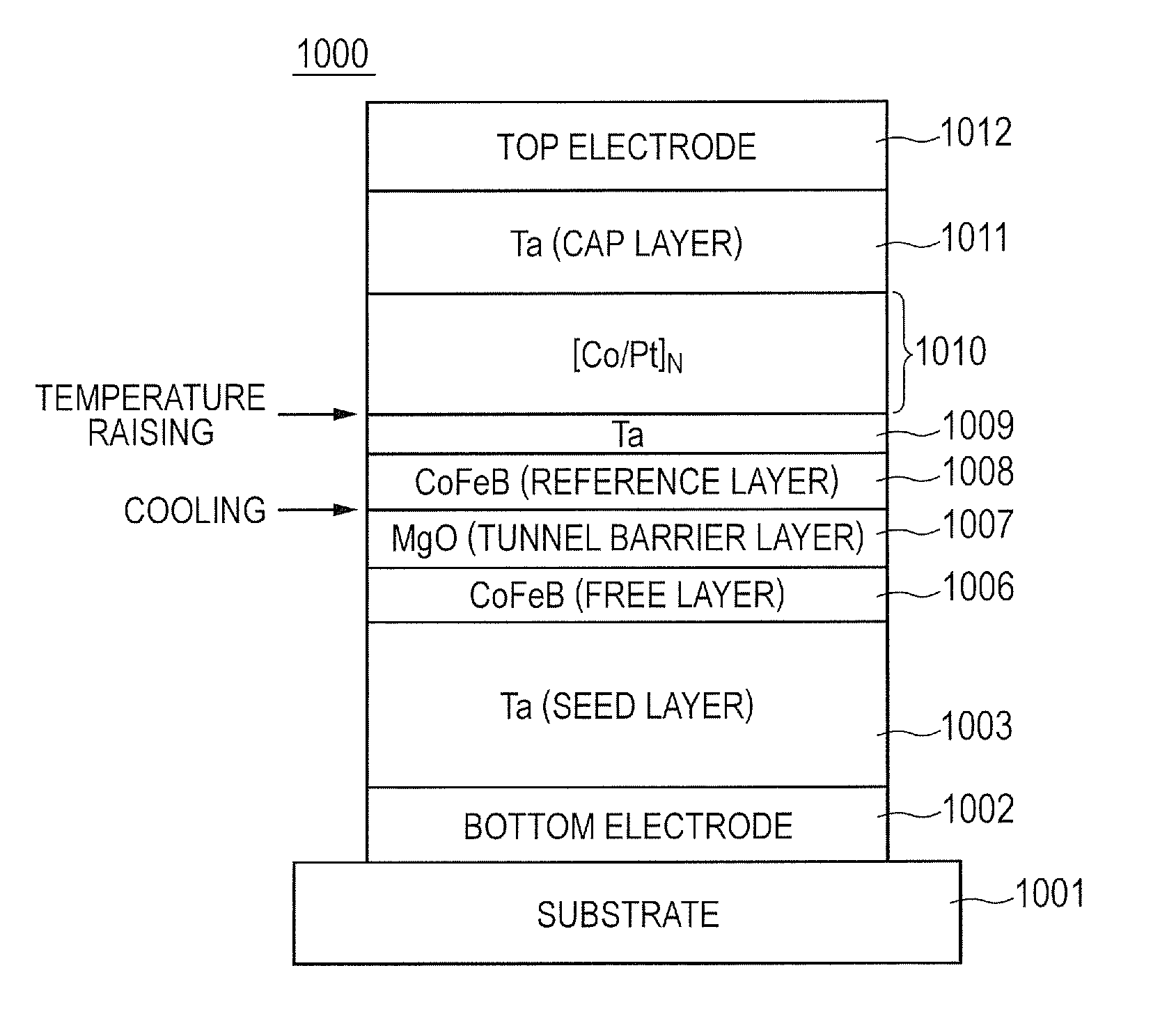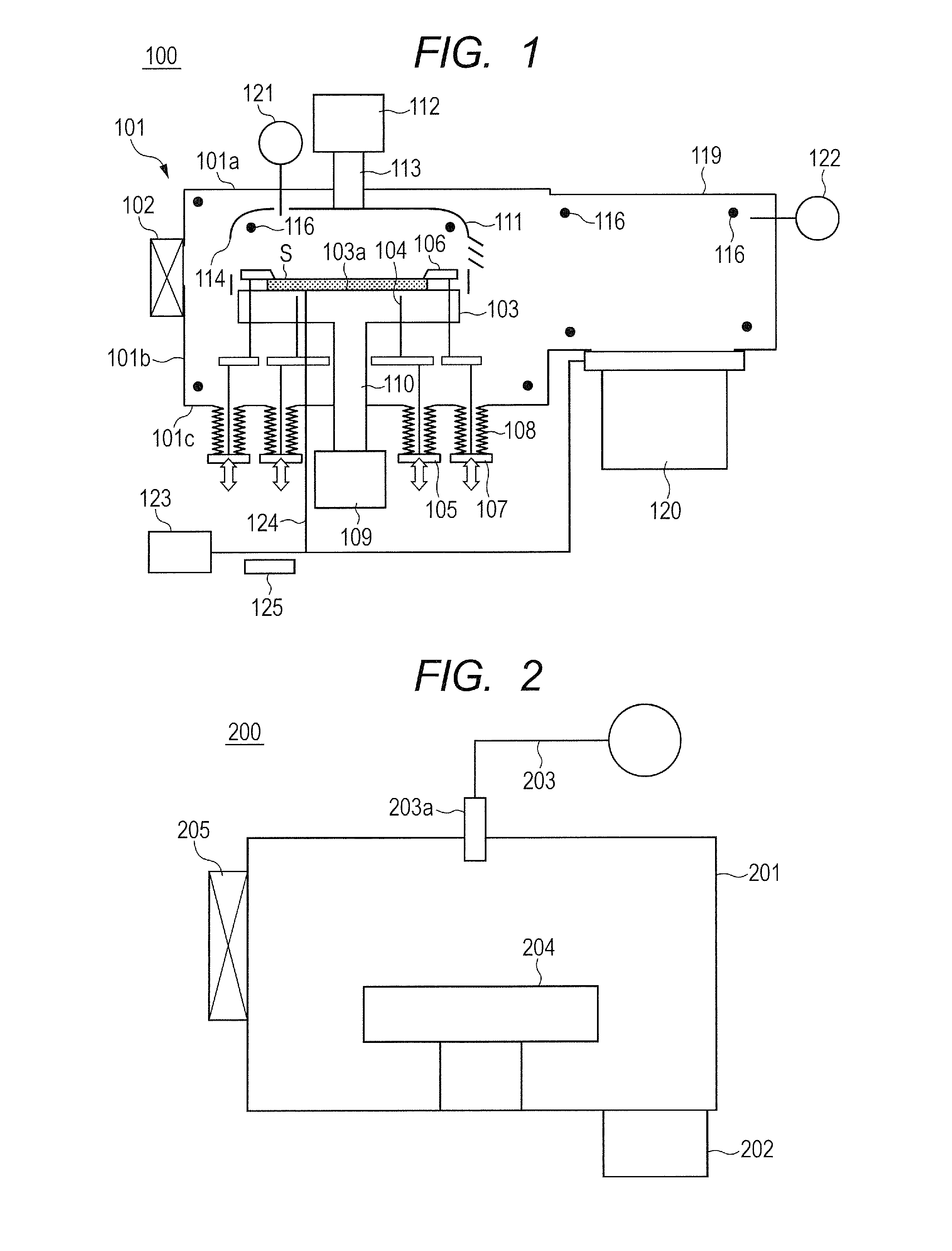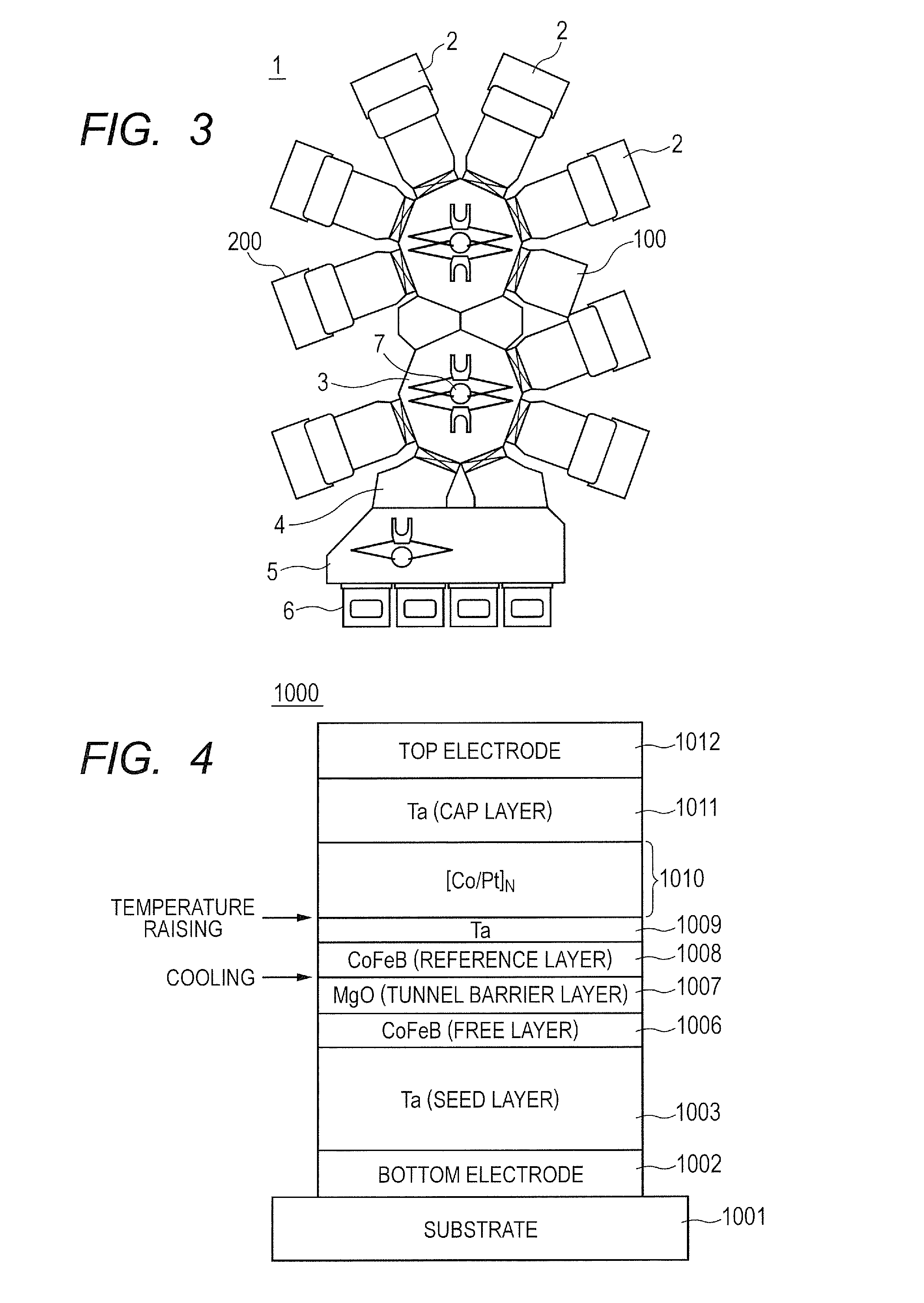Manufacturing method of magnetoresistive effect element
a manufacturing method and magnetoresistive effect technology, applied in the manufacture of inductance/transformer/magnet, spin-exchange-coupled multilayers, magnetic bodies, etc., can solve the problem of insufficient mr ratio of the magnetoresistive effect element described in non-patent document 1 , to achieve the effect of enhancing mr ratio, high mr ratio and enhancing mr ratio
- Summary
- Abstract
- Description
- Claims
- Application Information
AI Technical Summary
Benefits of technology
Problems solved by technology
Method used
Image
Examples
first embodiment
[0022]FIG. 1 is a schematic configuration diagram showing a substrate cooling device 100 of this embodiment, which serves as a substrate processing device configured to cool a substrate. The substrate cooling device 100 includes a chamber 101 and an exhaust chamber 119. An upper wall 101a of the chamber 101 is detachably provided, so that maintenance work, cleaning, and the like can be performed while detaching the upper wall 101a. A gate valve 102 is openably and closably provided to a side wall 101b of the chamber 101, so that a substrate S can be conveyed into and out of the chamber 101 through the gate valve 102. A substrate holder 103 having a substrate mounting surface 103a is provided inside the chamber 101. The substrate S can be mounted on the substrate mounting surface 103a.
[0023]The substrate holder 103 is provided with a rod-like lift pin 104 for supporting a bottom surface of the substrate S while penetrating the substrate mounting surface 103a. By using a lift pin dri...
second embodiment
[0070]While the MTJ element 1000 according to the first embodiment has the structure (the top pin structure) in which the reference layer 1008 is provided on the tunnel barrier layer 1007, the present invention is also applicable to the structure (the bottom pin structure) in which the free layer is provided on the tunnel barrier layer. FIG. 10 is a diagram showing a flowchart of a film formation method of the MTJ element 2000 shown in FIG. 9, which represents an example of the MTJ element of the bottom pin structure.
[0071]After a substrate is carried into a given substrate processing chamber (step S31), layers up to a CoFeB layer 2007 as a reference layer are formed in a lower layer forming step (step S32). Specifically, in the lower layer forming step (step S32) of the manufacturing process of the MTJ element 2000, a bottom electrode 2002, a Ta seed layer 2003, a Ru layer 2004, a laminated body 2005 (a pin layer), a Ta layer 2006, and the CoFeB layer 2007 as the reference layer ar...
PUM
 Login to View More
Login to View More Abstract
Description
Claims
Application Information
 Login to View More
Login to View More - R&D
- Intellectual Property
- Life Sciences
- Materials
- Tech Scout
- Unparalleled Data Quality
- Higher Quality Content
- 60% Fewer Hallucinations
Browse by: Latest US Patents, China's latest patents, Technical Efficacy Thesaurus, Application Domain, Technology Topic, Popular Technical Reports.
© 2025 PatSnap. All rights reserved.Legal|Privacy policy|Modern Slavery Act Transparency Statement|Sitemap|About US| Contact US: help@patsnap.com



